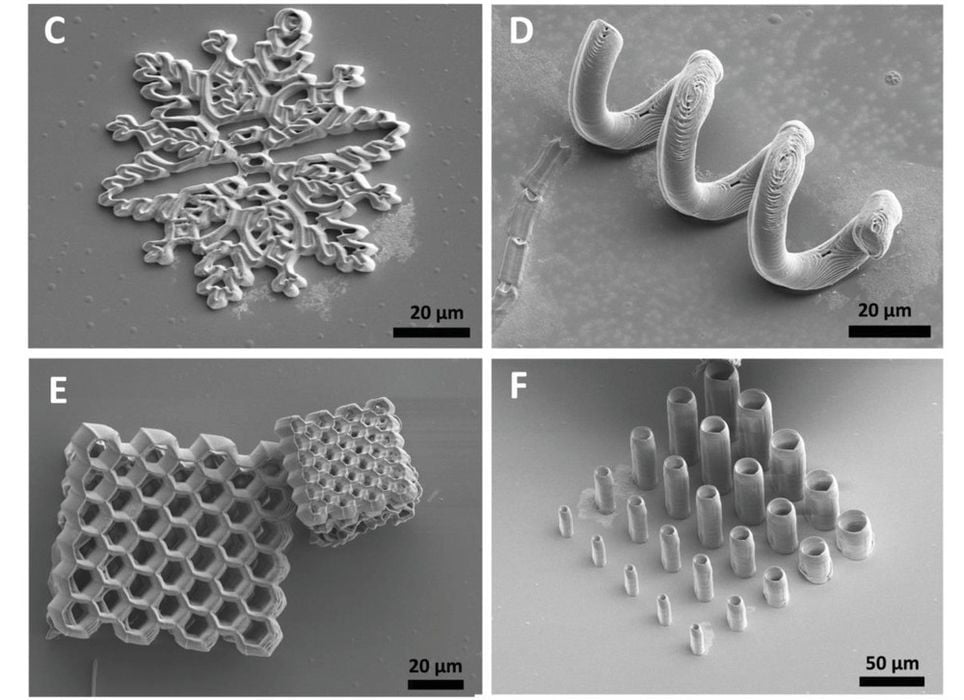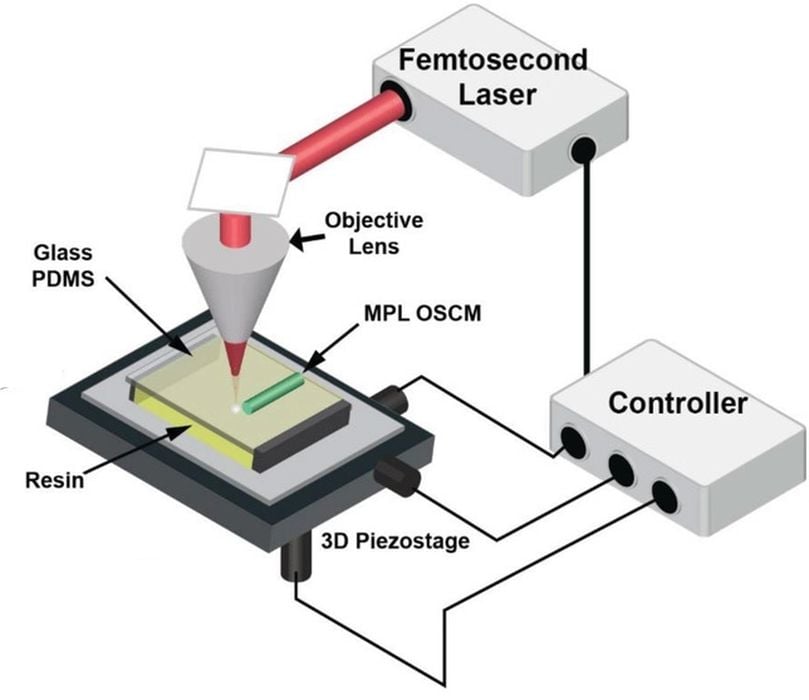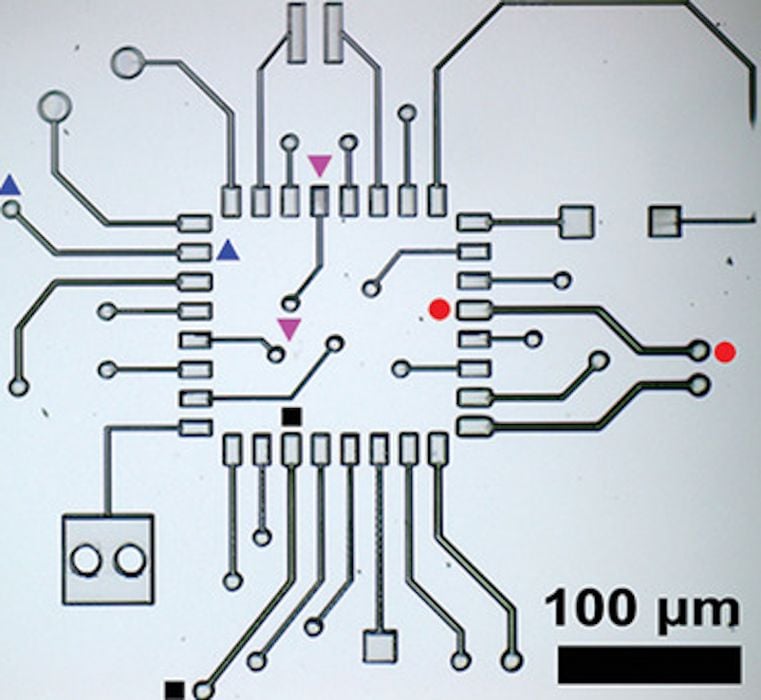
Researchers have created an organic resin material capable of electrical conductivity that can be used with the multiphoton process.
Multiphoton lithography is the current state of the art for 3D printing extremely small objects. The process involves managing the focus and output so tightly that the energy at the tiny focal point is sufficient to trigger polymerization in a resin. The size of the focal point is so small than structures of only a few microns can be printed by moving the focal point around in 3D space.
The process is used to create tiny lenses, microscopic mechanical devices and more.

But now there may be some very intriguing new use cases as a result of a new material developed by researchers at the University of Houston.
The material was created by mixing a small proportion of an organic semiconductor (0.5% by weight) with a clear photopolymer resin. The researchers found that printing this resin resulted in electrical conductivity by “10 orders of magnitude”.
The researchers were able to achieve successful 3D printing through considerable experimentation with materials and print parameters, but eventually found a combination that worked well.

That is quite significant, and allowed the researchers to 3D print small electrical devices, such as a micro capacitor array. They explain:
“We have presented a homogeneous and transparent MPL compatible resin-doped with an OS to fabricate 3D OS composite microstructures with enhanced electrical conductivity. Using MPL process, we fabricated various microelectronic elements and devices on glass and PDMS substrates, including microresistors, microcapacitors and μPCBs. We have demonstrated that laminin can be incorporated into these OS composite polymers without a significant loss of activity as the resultant structures were able to support cellular adhesion and growth.”
The most interesting part of this discovery is that as a result of the use of organic additives, the resulting conductive objects are biocompatible. This means that if using this material and process, it is possible to 3D print devices that could be embedded in living tissue, such as sensors, switches and other components.
Once again, an entirely new range of applications is suddenly enabled by a development in 3D printing technology. Researchers can now begin creating body-embeddable electrical devices for purposes we cannot guess.
Via Wiley
